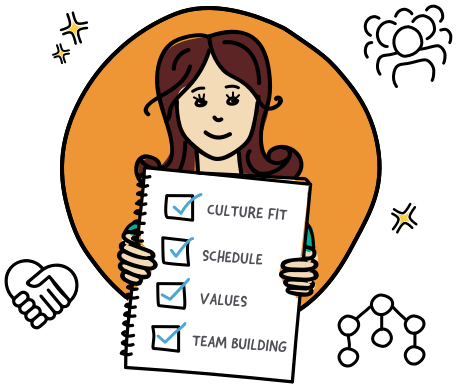
Like it or not, the Great Resignation isn’t going away. Last year, the Bureau of Labor Statistics reported that some 47 million Americans quit their jobs, the most resignations on record. Triggered by the pandemic, the Great Resignation’s high quit rates are continuing well into 2022.
Issues like demographic shifts and a sharp decrease in immigration mean that even when we’re past the pandemic impacts on the labor market, employers will likely struggle to attract and keep workers. In fact, our research indicates that 30% of private sector workers and 49% of government employees say they are likely to leave their organization within the next 12 months.
Given this bleak long-term labor outlook, it’s all the more important to keep new hires in their jobs for as long as possible. Recruiting new employees is time consuming and expensive, and the costs are even higher given the chronic worker shortage.
One strategy that’s often overlooked when it comes to improving employee retention: strengthen your onboarding.
Onboarding refers to the process by which new hires are integrated into an organization. But the mistake many companies make is limiting onboarding to just those initial start-up and orientation activities: completing paperwork, getting an email account, computer and desk, or reading the employee handbook. Often overlooked are critical longer-term activities that really set an employee up for success: fully understanding the culture, building key relationships across the organization, and having an in-depth knowledge of performance expectations and the performance management process.
Our new research finds that employers are falling far short when it comes to onboarding—both on the basics and the long-term onboarding activities. A national survey of new hires indicates that their onboarding did not adequately cover relationship building (71%), organizational culture (62%), technology (54%), and benefits (46%). Also, about half (49%) of employees who started a new job are not getting trained in-person, which further complicates onboarding. For 31% of new hires, onboarding has been virtual, and for 18% it has been hybrid.
The key for leaders is to stop thinking about onboarding as a short-term human resources function. Successfully folding new hires into an organization happens over time with many people involved, from managers to co-workers.
To give new hires what they need to be successful—and to get the outcomes they want—employers should pivot to more human-centered and team-oriented onboarding.
Here are three ways to improve the onboarding experience.
New hires said their onboarding did not adequately cover:

Source: Eagle Hill Onboarding Survey 2022
1. Emphasize career development and performance management
When asked what they would like more of in the first month on the job, 83% of new hires say they are interested in learning more about how performance is measured. Also, 74% of new hires want to know how to be successful in the corporate culture. These responses suggest that even from their first weeks on the job, employees assess the longer-term viability of their role in terms of career growth and cultural fit.

83%
of new hires say they’re interested in learning more about how performance is measured

74%
of new hires want to know how to be successful in the corporate culture
Source: Eagle Hill Onboarding Survey 2022
This puts the responsibility squarely on the shoulder of employers to deliver on these expectations. While performance management is more difficult in a hybrid or virtual work environment, there still must be clarity early on about expectations, career pathing, and what success looks like. This is key to keeping employees from leaving in the first six months for opportunities that offer more clearly defined career growth.
2. Pay attention to employee well-being and connections
Most new employees (76%) want to learn more about mental and physical health resources during onboarding. Employees want to know that they can be open about their well-being and can count on their employer to provide self-care resources. This is a signal for employers to think about employee well-being more broadly than they have in the past, and to communicate early and often about their programs. Supporting employee well-being is the right thing to do; it can prevent employee burnout and improve productivity, connection, and engagement.
New hires are also interested in developing personal connections with their colleagues and the company. Seventy-five percent say that they want more opportunities to connect with people on their team, and 69% are interested in building relationships outside their team during onboarding. A majority (70%) want more information about the core values of the organization. The challenge for employers is that relationship building and cultural immersion are much harder in a virtual or hybrid work environment. There is no replacement for in-person events, informal meet and greets, or watercooler talks following traditional onboarding activities. So, employers need different ways to help new hires feel, see, and experience the culture of their organization, regardless of where onboarding occurs.
3. Move the onboarding responsibility beyond human resources
In many organizations, onboarding is largely the responsibility of the human resources department. But new hires say they are more interested in getting help, training, and guidance from a broader group of people including their supervisor (63%) and teammates (46%). This suggests that employees want to feel immersed in the organization as part of onboarding so that they understand their role and how it fits into their team and organization.
With so much to pack into onboarding, having only one group lead it is not ideal, particularly as employees settle into their day-to-day routines and get busy. Assigning responsibilities and providing tools to other groups creates a more distributed onboarding process that engages the rest of the organization.
The last thing employers want is for their sought-after new hires to regret their decision to join the organization. Re-thinking your onboarding strategy can go a long way to ensuring your hard-earned Great Resignation new hires stay and are set up for success.


